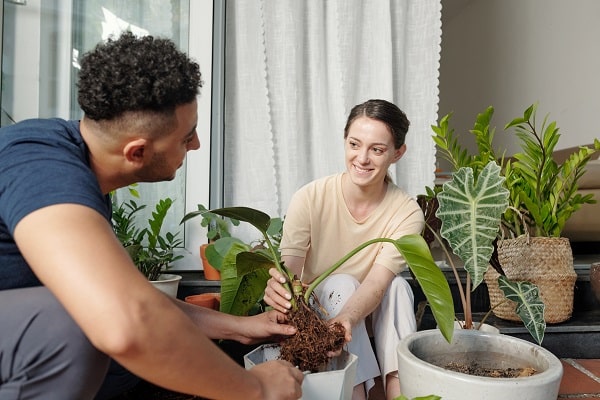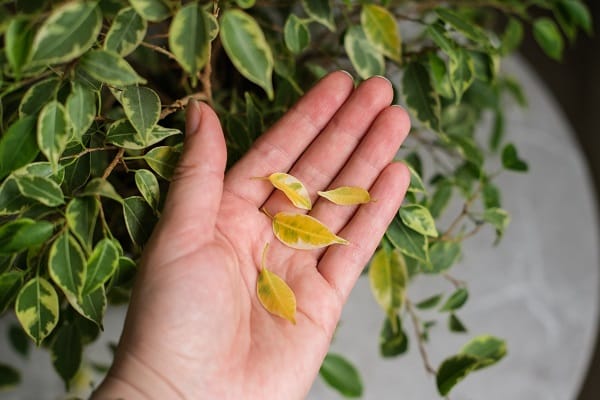Indoor gardening is an exciting venture that allows you to bring the beauty and benefits of nature right into your living space. Whether it’s due to the changing seasons, limited outdoor space, or simply a love for indoor greenery, taking the time to move your garden indoors can be a rewarding experience. This post will guide you through the process, from understanding the concept of indoor gardening to preparing your plants and indoor space for the move. Let’s embark on this journey to create a thriving indoor garden that not only enhances your home’s aesthetics but also contributes to your well-being!
Contents
- 1 The Basics Of Indoor Gardening
- 2 Choosing The Right Plants For Indoor Gardening
- 3 Preparing Your Indoor Space
- 4 Preparing Your Plants For The Move
- 5 The Moving Process
- 6 Setting Up Your Indoor Garden
- 7 Ongoing Care For Your Indoor Garden
- 8 Troubleshooting Common Problems
- 9 You’re Ready To Move Your Garden Indoors!
The Basics Of Indoor Gardening
Indoor gardening involves growing plants within your home or enclosed spaces. It’s an excellent way to cultivate a variety of plants, including herbs, vegetables, and ornamental species, regardless of the weather conditions outside. Indoor gardening offers numerous benefits, such as improving air quality, boosting mood, and providing a sense of accomplishment. However, it’s not without its challenges. Understanding these challenges is the first step toward creating a successful indoor garden.
While indoor gardening offers a controlled environment, it also requires careful attention to the plants’ needs. Unlike outdoor plants, indoor plants rely entirely on you for their survival. They need the right amount of light, water, and nutrients to thrive. Additionally, indoor plants can be more susceptible to pests and diseases due to the lack of natural predators. Understanding these challenges will help you prepare and care for your indoor garden effectively.
Choosing The Right Plants For Indoor Gardening
Not all plants are suitable for indoor gardening. Some plants require specific conditions that may be difficult to replicate indoors. Therefore, it’s crucial to choose plants that are known to thrive in indoor conditions. Some popular choices include snake plants, pothos, spider plants, and succulents. These plants are known for their hardiness and adaptability to indoor environments.
When choosing plants for your indoor garden, consider factors such as light requirements, size, and growth habits. Some plants require bright, indirect light, while others can tolerate low-light conditions. Similarly, consider the size of the plant at maturity. Some plants can grow quite large and may not be suitable for small spaces. Also, consider the plant’s growth habits. Some plants, like vines, can spread quickly and may need regular pruning to keep them in check.
Preparing Your Indoor Space
Choosing the right location for your indoor garden is crucial. Most indoor plants require bright, indirect light, so a south or east-facing window is often ideal. However, if you don’t have access to such a location, you can supplement natural light with grow lights. Ensure the space is clean and free from drafts, as sudden temperature changes can stress plants.
Preparing your space also involves considering the aesthetics of your indoor garden. Think about how the plants will fit into your existing decor. You might want to group plants together for a lush, jungle-like feel, or you might prefer a minimalist approach with just a few strategically placed plants. Also, consider using plant stands or shelves to maximize space and light exposure. Remember, the goal is to create a space where both you and your plants will thrive.
Preparing Your Plants For The Move
Before moving your plants indoors, it’s essential to prepare them for the transition. Start by pruning any dead or diseased parts of the plant. This not only improves the plant’s appearance but also reduces the chance of disease spreading. Next, check for pests. The last thing you want is to bring pests into your home along with your plants. Use a mild insecticidal soap or neem oil to treat any infestations.
Timing is also crucial when moving plants indoors. It’s best to do this before the outdoor temperatures drop below 50 degrees Fahrenheit. A sudden change in temperature can shock plants, leading to leaf drop or even death. Gradually acclimate your plants to indoor conditions by bringing them in at night for a week or two before the final move. This will help them adjust to the lower light levels and humidity indoors.
The Moving Process
The process of moving your plants indoors involves more than just picking them up and placing them inside. Start by thoroughly watering your plants a few hours before the move. This will help to reduce transplant shock. When moving the plants, handle them carefully to avoid damaging their stems and roots. If the plants are in large pots, consider using a dolly or cart to move them.
Once inside, place your plants in their pre-determined locations. Remember, it’s normal for plants to show signs of stress, such as yellowing or dropping leaves after the move. This doesn’t necessarily mean they’re dying. It’s just their way of adjusting to the new environment. However, if the plant continues to decline after a few weeks, it may be a sign that it’s not getting the conditions it needs to thrive.
Setting Up Your Indoor Garden
Setting up your indoor garden involves arranging your plants in a way that promotes their growth and enhances your space’s aesthetics. Group plants with similar light and water requirements together. This not only makes care easier but also creates microclimates that can benefit your plants. For example, grouping humidity-loving plants together can increase the local humidity level, benefiting all the plants in the group.
Light, temperature, and humidity are crucial factors for plant growth. Ensure your plants are getting the right amount of light, either from a window or supplemental grow lights. Maintain a consistent temperature in your indoor garden, ideally between 65 and 75 degrees Fahrenheit. Use a humidifier or mist your plants regularly to increase humidity, especially during the dry winter months. Remember, each plant is unique, so it’s important to understand and cater to their specific needs.
Ongoing Care For Your Indoor Garden
Caring for your indoor garden involves regular watering, feeding, and pruning. Most indoor plants prefer their soil to dry out slightly between waterings. Overwatering is a common cause of indoor plant death, so it’s better to err on the side of underwatering. Feed your plants with a balanced, water-soluble fertilizer during the growing season, usually spring and summer. Prune your plants regularly to maintain their shape and size and to promote bushier growth.
Monitoring and managing pests and diseases is also a crucial part of indoor garden care. Regularly inspect your plants for signs of pests like aphids, spider mites, and mealybugs. Treat any infestations promptly to prevent them from spreading to other plants. Similarly, watch out for signs of disease, such as yellowing leaves, black spots, and wilting. Early detection and treatment can save your plant’s life.
Troubleshooting Common Problems
Even with the best care, problems can arise in your indoor garden. One common issue is yellowing leaves, which can be caused by several factors, including overwatering, poor drainage, or nutrient deficiencies. If you notice yellowing leaves, check your watering practices and ensure your plant’s pot has adequate drainage. If these are not the issue, your plant may need a nutrient boost from a balanced fertilizer.
Drooping or wilting is another common problem. This can be a sign of both overwatering and underwatering. If the soil is wet and the plant is wilting, you may be overwatering. If the soil is dry, your plant likely needs water. Remember, it’s better to underwater than overwater. Also, be aware of pests. Small bugs on the leaves or a sticky residue on the plant or nearby surfaces can indicate a pest problem. Treat promptly with insecticidal soap or neem oil to prevent the pests from spreading to other plants.
You’re Ready To Move Your Garden Indoors!
Moving your garden indoors might seem like a daunting task, but with the proper knowledge and preparation, it can be a rewarding experience. From understanding the concept of indoor gardening to choosing the right plants, preparing your indoor space, and caring for your plants, each step brings you closer to creating a thriving indoor garden. Remember, every plant is unique, and part of the joy of gardening is learning about their needs and watching them flourish. So, don’t be discouraged by any challenges that arise. Embrace them as opportunities to learn and grow as a gardener!







